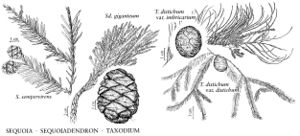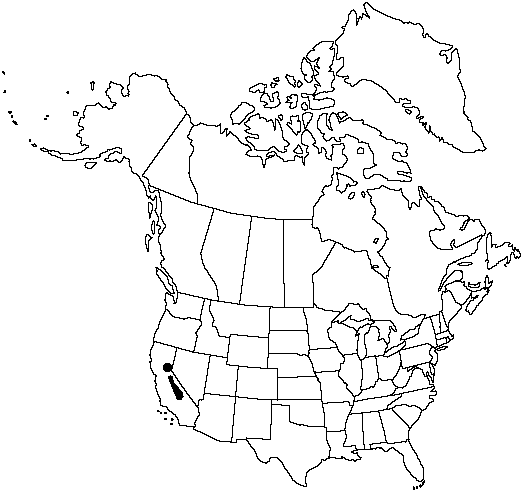Sequoiadendron giganteum
Amer. J. Bot. 26: 536. 1939.
Trees to 90 m; trunk to 11 m diam.; crown conic and monopodial when young, narrowed and somewhat rounded in age. Bark reddish brown, to ca. 60 cm thick, fibrous, ridged and furrowed. Branches generally horizontal to downward-sweeping with upturned ends. Leaves generally with stomates on both surfaces, the free portion to ca. 15 mm. Pollen cones nearly globose to ovoid, 4–8 mm. Seed cones 4–9 cm. Seeds 3–6 mm. 2n = 22.
Habitat: Mixed montane coniferous forests, in isolated groves on the w slopes of the Sierra Nevada
Elevation: 900–2700 m
Discussion
Mature individuals of this species are the most voluminous living organisms and among the most long-lived trees. Sequoiadendron giganteum was formerly included in Sequoia, under the later homonym Sequoia gigantea (Lindley) Decaisne, a conservative placement that still has merit (J. Doyle 1945; O. Schwarz and H. Weide 1962).
Redwood, including Sequoiadendron giganteum and Sequoia sempervirens, is the state tree of California.
Selected References
None.

